“GoSF” = Geology of San Francisco
Merry Christmas, if that’s your thing. In case you were too busy trying to be good this past week, Mountain Beltway has been in the business of reviewing three field trips I took last week examining the geology of San Francisco and neighboring areas. The master plan is to cover:
Serpentinite and mélange (today)
Fractures and the chemistry along them
Pleistocene dunes
The San Andreas Fault and Mussel Rock
Here’s what serpentinite looks like. (You may recall that I showed you some serpentinite from Turkey too.)
Here’s another typical exposure, on the path down to Marshall Beach.*
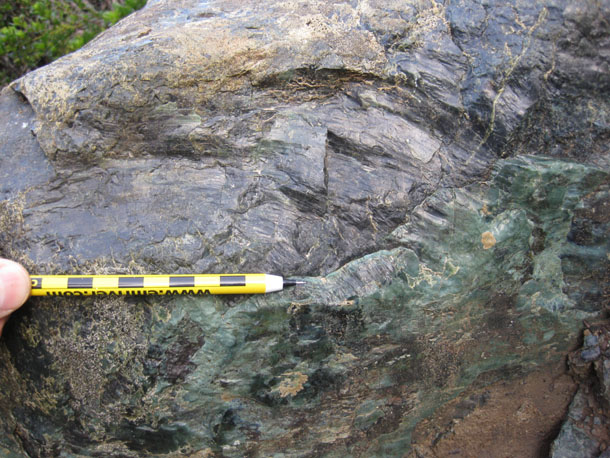
* A warning: Marshall Beach is sometimes home to nude sunbathers. As Clyde Wahrhaftig puts it, “On sunny days, there may be other types of exposures.”
We got down to the beach, and saw the cliffs were made of this:
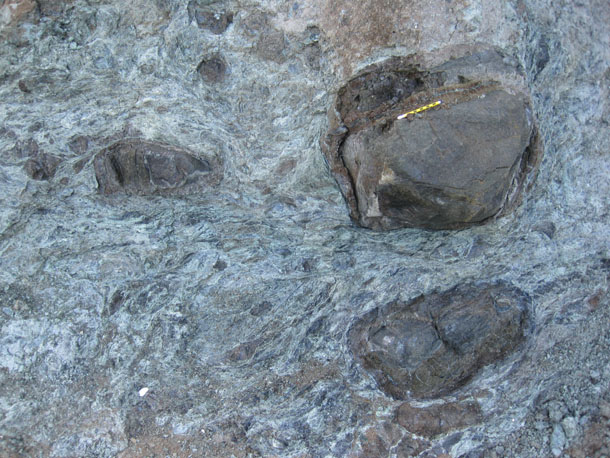
Holy. Freaking. Cow.
That is an AMAZING thing to see — tectonically-rounded blocks of serpentinite, surrounded by a sheared-out, foliated paste of crushed serpentinite. That is a serpentinite mélange. Look at the way the foliation wraps around these lone survivors, like native prairie grasses swishing around the last two bison in South Dakota:
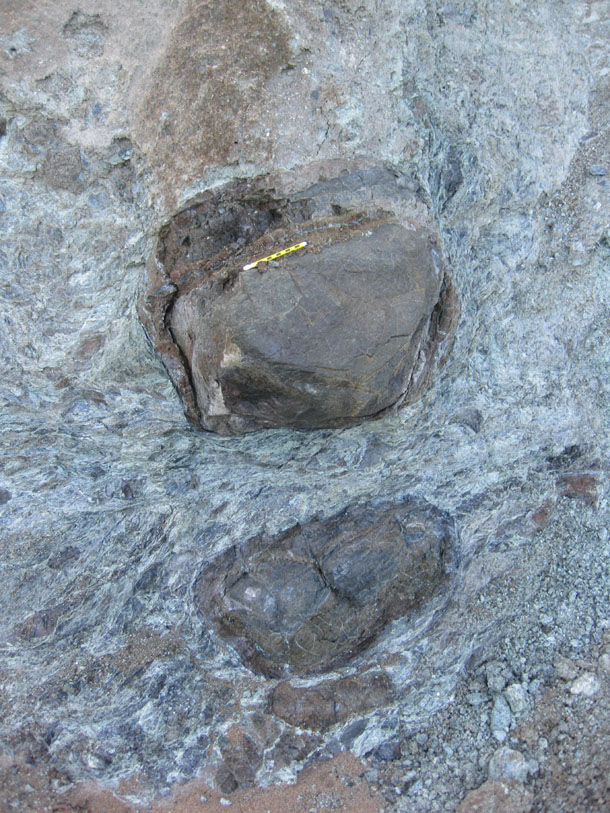
Wow. I can’t get over this. Seeing rocks like these captures for me the essence of plate tectonics, these motions of the paste pulverizing and thoroughly re-organizing the rocks of the past, and we can see those signatures in the rocks of the present. This is an amazing geologic exposure, and the next time you’re in San Francisco, you should really go see it. If you’re traveling with people who don’t dig rocks as much as we do, just promise them this view**:

** Fog permitting
I removed one such as-yet-un-pulverized clast from this sticky matrix, then took it down to the shore to rinse it off. Here’s a top view, showcasing the grooves parallel to the long axis of the clast:
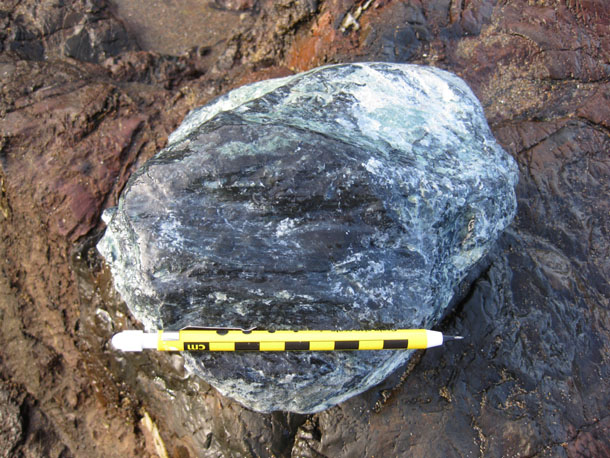
Back view:
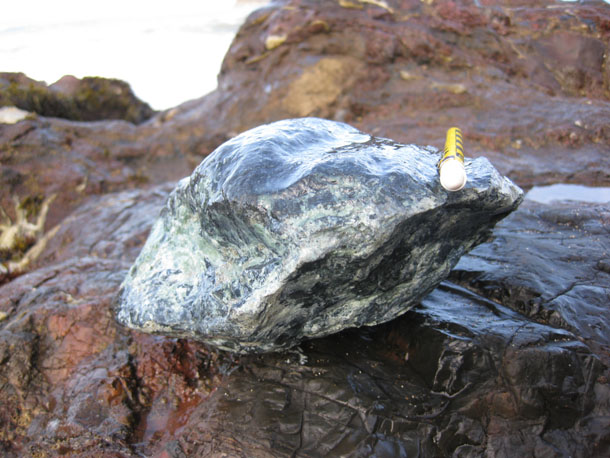
Front view:
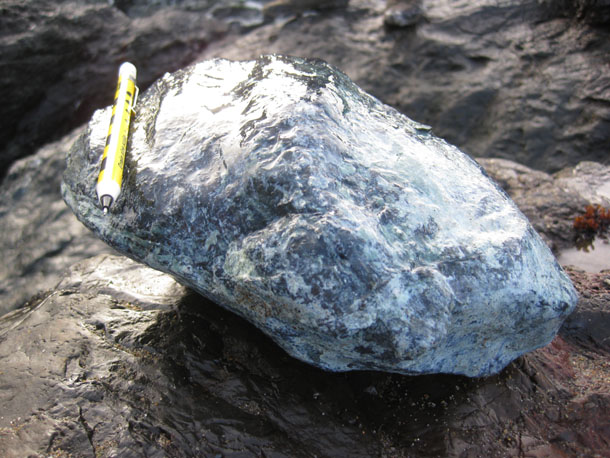
This thing reminded me of the spaceship from the 1986 film Flight of the Navigator. (compare)
More of this sheared out mixed of pulverized and metamorphosed rock, flavored with chunks of not-quite-pulverized and metamorphosed rock:
There were plenty of slickensided surfaces on the large, resistant clasts. Everywhere you looked, you could find lovely slicks. Like these:
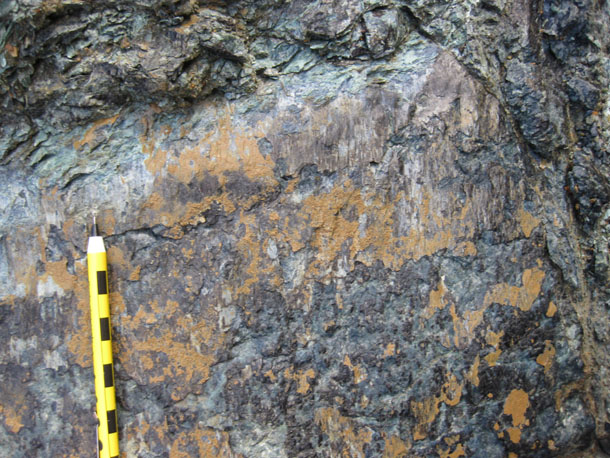
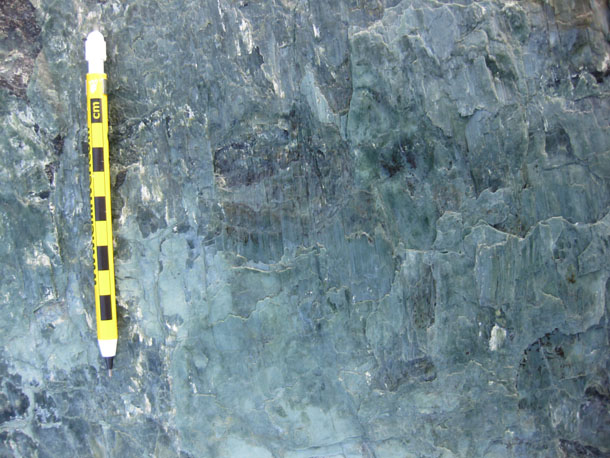
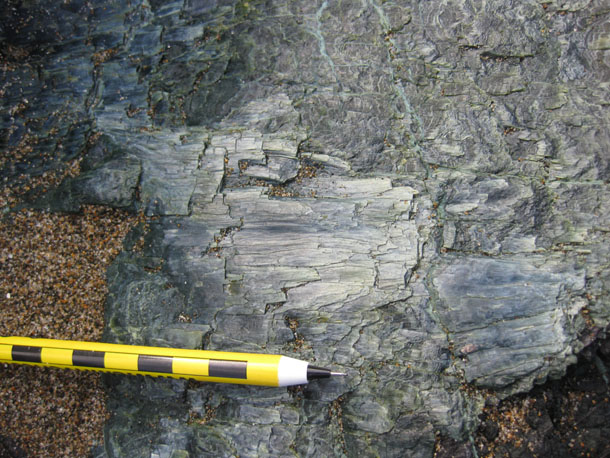 d
d
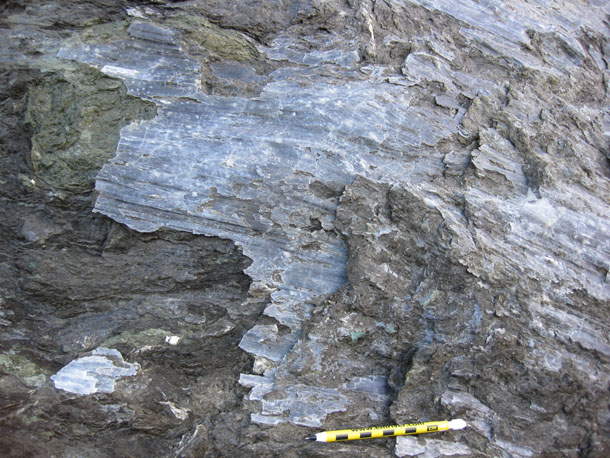
This last slicked surface is from the path down to Point Bonita at Marin Headlands National Recreation Area, not Marshall’s Beach:
Same deal, though. Different location. Uniformitarianism: get over it.
Back to Marshall Beach:
There were a lot of shattered zones of serpentinite, “glued” together with veins of asbestiform serpentine. The contrast between vein and host was lovely, as here:
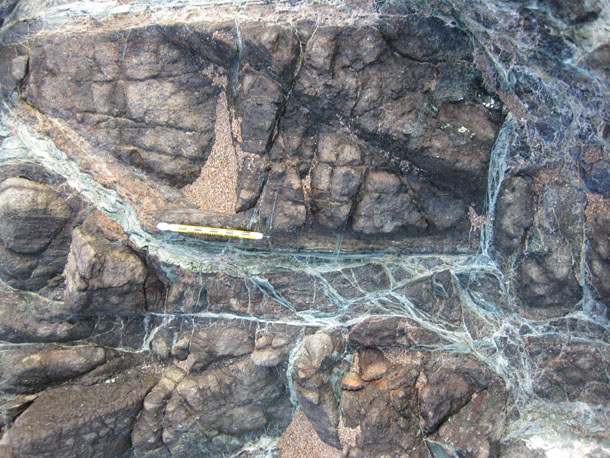
Closer in to this same fracture zone:
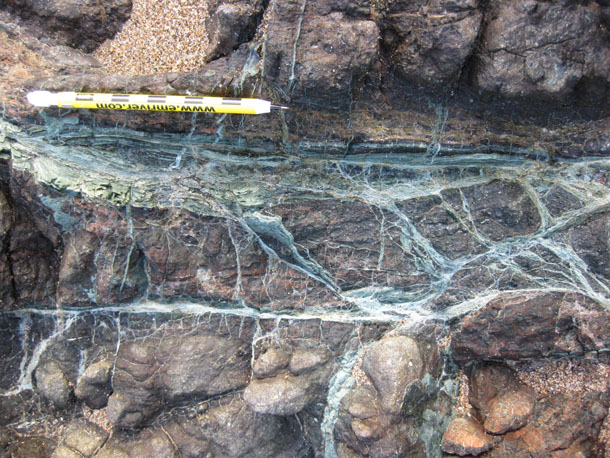
Wahrhaftig (1984) calls this a “crazed china” pattern, due to its resemblance to certain styles of ceramic glazing (compare):

As we explored down the coast a ways, we found a transition out of the sheared-up serpentinite, and into a shale-based sedimentary mélange, with chunks of graywacke and even pebble-bearing graywacke conglomerate:
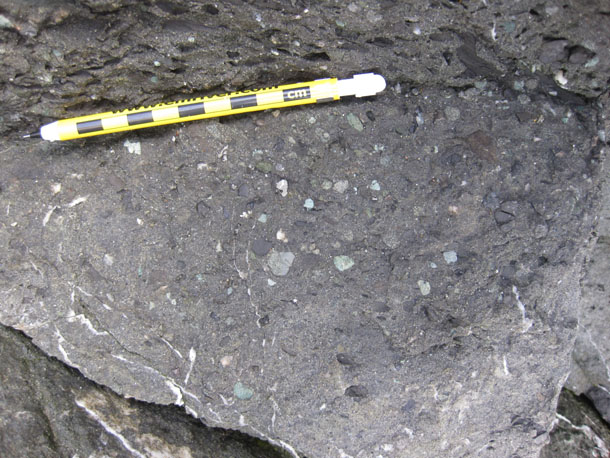
Note the mud-chip rip-up clasts (very flaky) in this exposure:
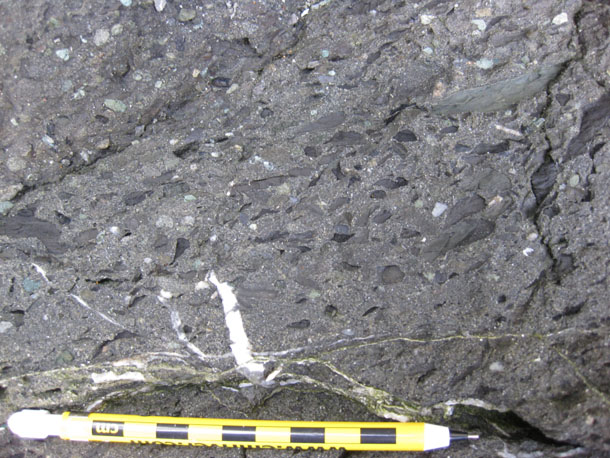
The white veins are filled with calcite, as you might expect.
Here’s some serpentinite clasts in the shale matrix, illustrating quite evocatively (I think) the mixed-up nature of these rock units:
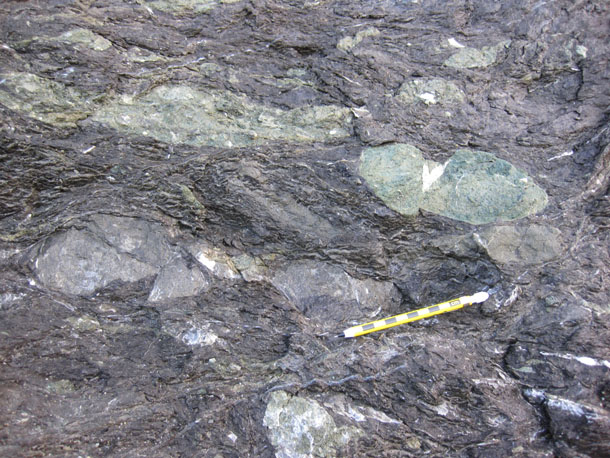
See if you can tease out a dominant sense of the kinematics of these rocks. I couldn’t. But then, as with squeezing a handful of watermelon pulp (including seeds), there are a lot of different motions between the competent bits, as the incompetent bits splootch between them.

The last thing Alan & I found before we headed back uphill to our bikes was this contact between the serpentinite-hosted mélange, and the shale-hosted mélange:
The shale mélange is on the left, and the serpentinite mélange is on the right. Closer:
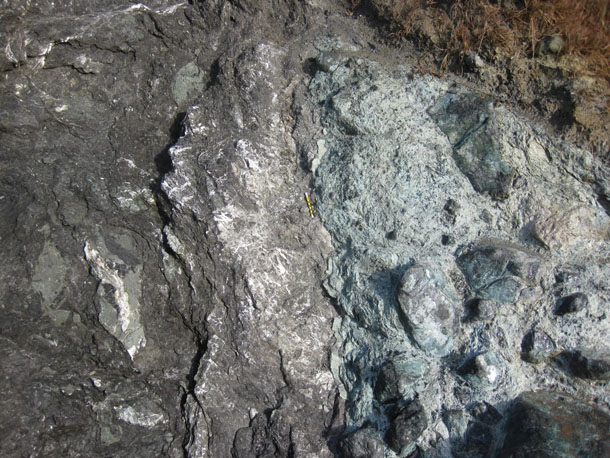
So is mélange a texture, not a composition… or is it?
Technically, the word mélange applies only to a mappable body of lithologically disorganized rock. I always thought of it as a textural descriptor, but I’m told by people who ought to know (i.e. ,the experts, like Mark Cloos of the University of Texas at Austin and Esti Ukar of Colorado College) that mélange has to be a big body of rock (mappable) to be “mélange.” This means that smaller zones of sheared-out rock don’t count as mélange except as analogy. Katryn Wiese drove this point home to our two-year-college group at a lovely mélange-like exposure on the trail down to Point Bonita.
Here are some images of those rocks (on the other side of the Golden Gate):
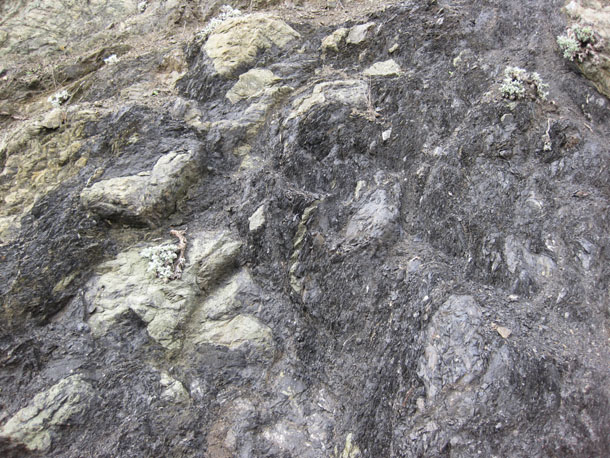

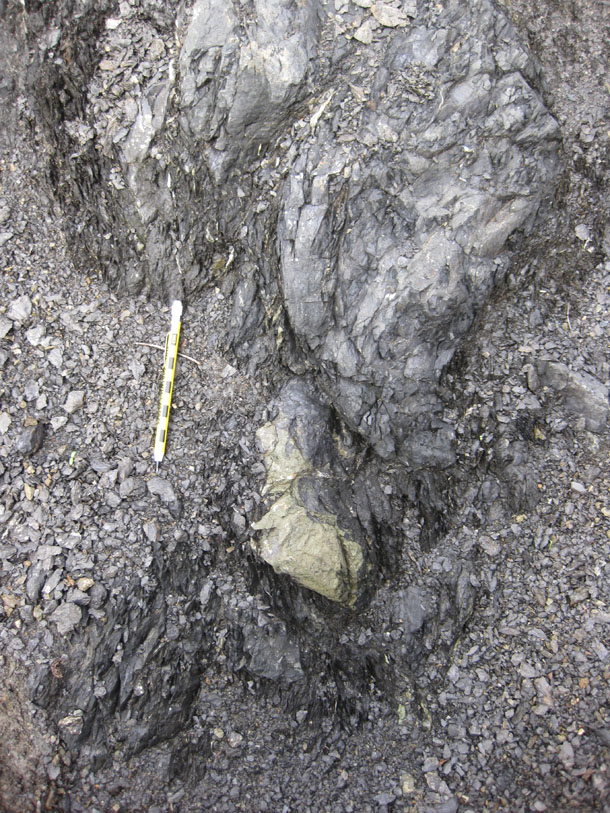
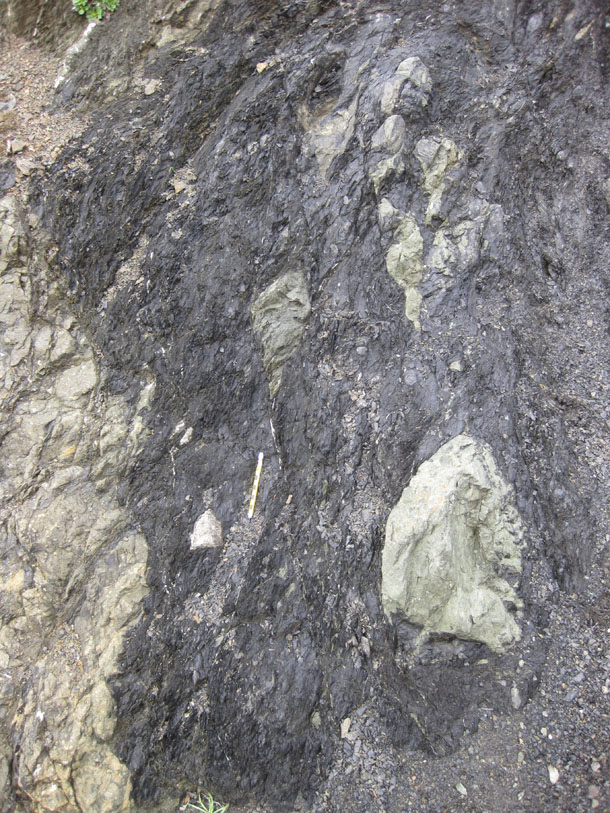
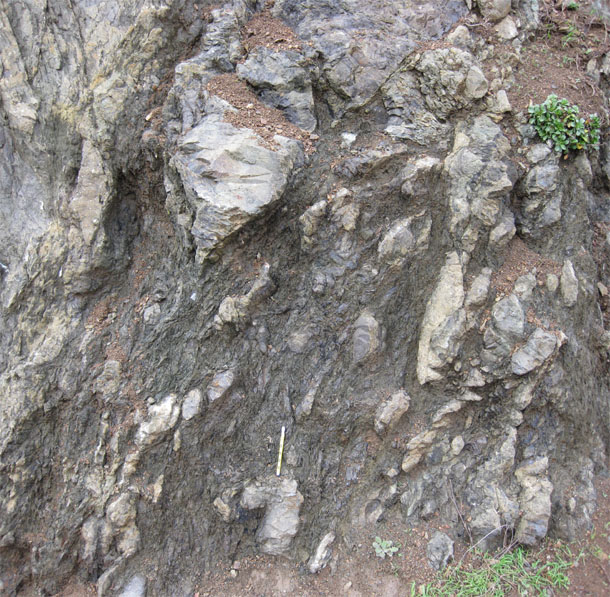
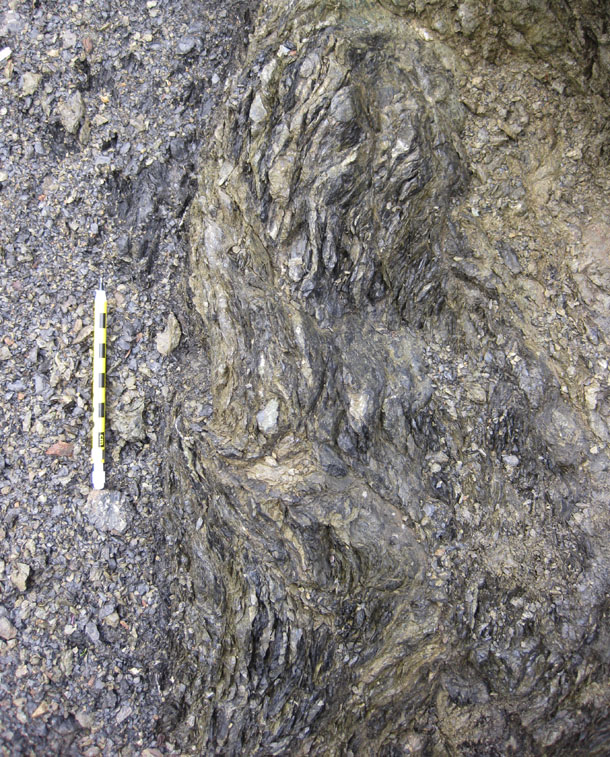
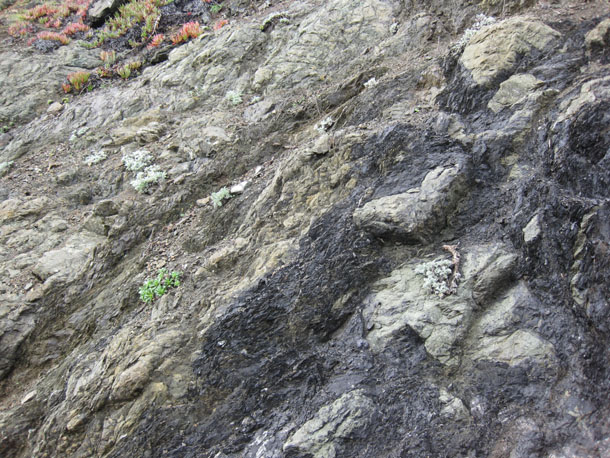
The previous 7 photos come from a belt of rock only 2 to 2.5 m wide. Even though they show the same sheared-out mixed up texture as the rocks at Marshall Beach, they don’t meet the “mappable” criterion to be dubbed “mélange.” This strikes me as fundamentally odd — do we come up with a different rock name for granite when it’s in a dike versus a pluton? Is a sandstone not a sandstone when it’s only a few cm thick? But then, maybe I’m thinking about this wrong — perhaps “mélange” is more like the term “batholith” or “erg” than it is a rock type, per se.
I hope you enjoyed the green of today’s imagery. Paired with Tuesday’s red, it’s coloration in tune with the season. I’m in Honduras today, celebrating the holiday by relaxing and being unplugged. (I wrote this last Monday.)
The “GoSF” series will resume on Monday.

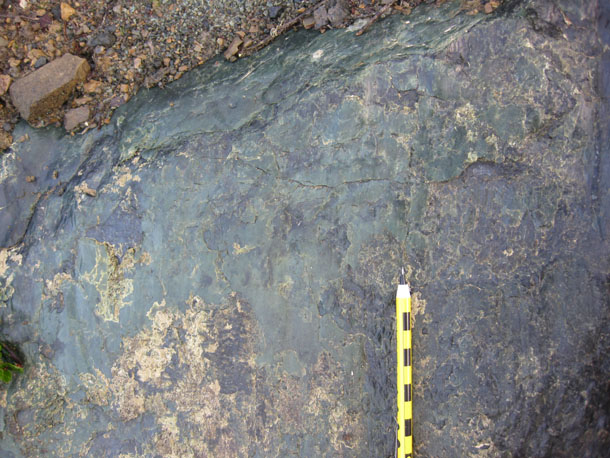
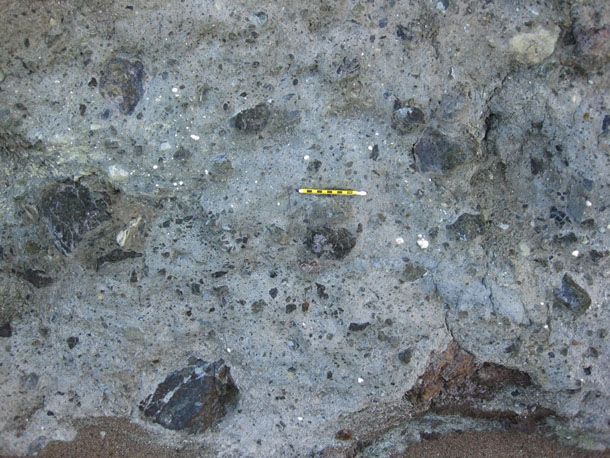
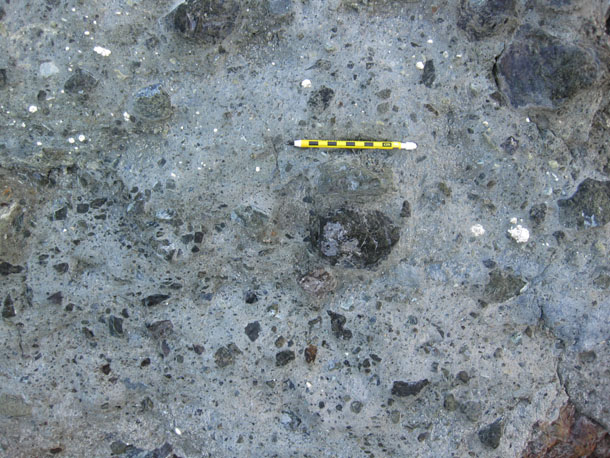
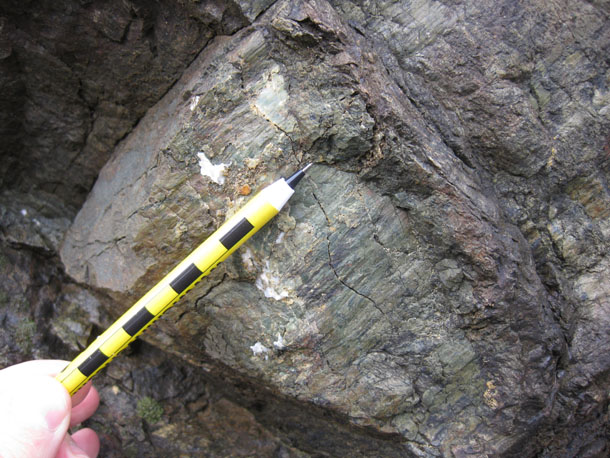
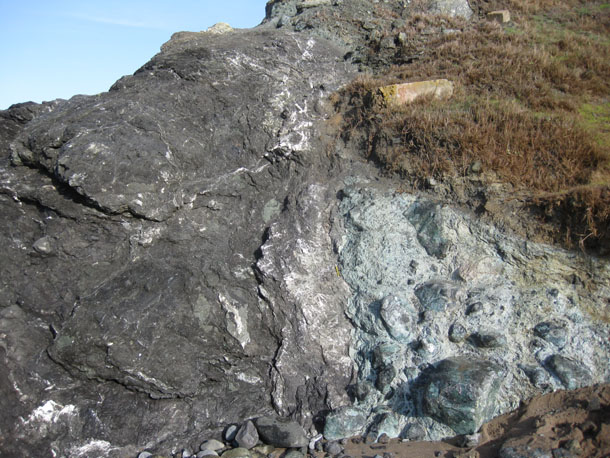
It’s gorgeous, Callan! Thank you thank you thank you! Merry Christmas and all that!
In geotechnical practice, anyone working in the Franciscan Formation, particularly in melange, should be familiar with the concept of bimrocks.
http://bimrocks.com/
oh amazing we also have same in egypt pls ….more geologic info
I was Googling an old teacher of mine, Clyde Wahrhaftig, and came across this page. I’ve been to this beach with him and our geology class, and we had a blast looking at these rocks. You captured them and described them beautifully! It brought back a great memory; one of the geology students (Mark Kubacki) had slick boots, and would slip and fall repeatedly on this trip, and sure enough, it was always on the serpentinite. It became a running joke that whenever he fell, “Check for serpentinite!” (It usually was). Between the serpentinite and pillow lavas found on other parts of the Bay Area beaches, I fell in love with geology and eventually got my degree in it. And now I realize what a privilege it was to have been taught geology by Clyde…he led our field camps, as well as other classes.
Thanks for sparking great memories!
Thank you for this post! I just used it to create an on-the-fly geology field trip for the student that I tutor who is having a hard time caring about rocks. He walked away today saying “rocks are cool.”
Awesome. Thanks for letting me know!